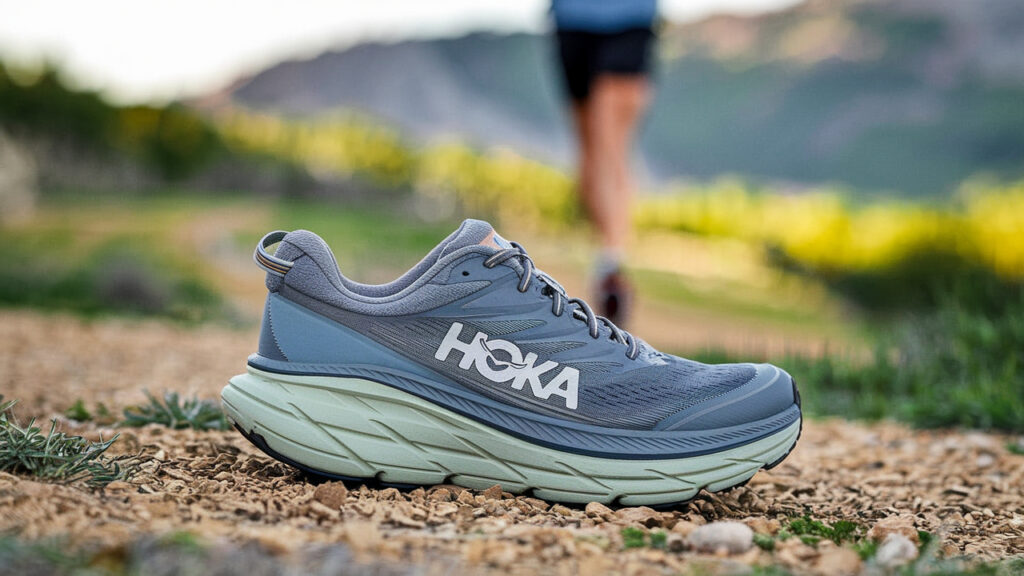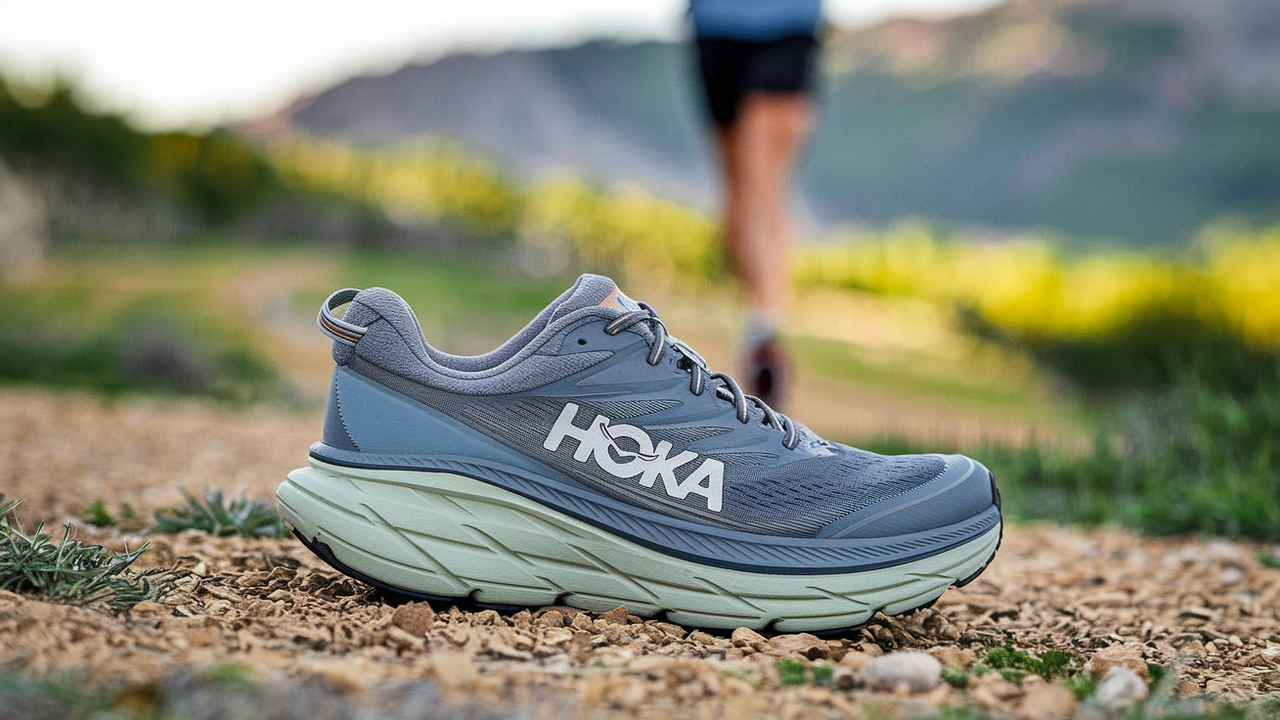Are Hoka Shoes Good for Back Pain? What You Should Know
If you struggle with back pain, especially in your lower back, you’ve likely tried everything — stretching, posture correction, maybe even a standing desk. But one area many people overlook is their footwear. What you wear on your feet directly affects your spine, alignment, and overall posture.
That brings us to the big question: Are Hoka shoes good for back pain? The short answer? Yes — for many people, they are. In this guide, I’ll explain why Hoka shoes are often recommended for back pain relief, which models are best, and how to choose the right one for your needs.

Table of Contents
How Footwear Affects Back Pain
Your feet are the foundation of your body. When they’re not properly supported, everything above them — including your knees, hips, and spine — is forced to compensate. Over time, that leads to poor alignment, muscle imbalances, and yes, chronic back pain.
Unsupportive shoes (or worn-out ones) often lack the structure and shock absorption needed to protect your body from the repetitive impact of walking and standing — especially on hard surfaces like concrete or tile.
Why Hoka Shoes Are Recommended for Back Pain
Hoka shoes are built with maximum cushioning, rocker-style soles, and supportive platforms that make walking smoother and less jarring. This reduces the strain that travels up from your feet to your spine, making them a favorite among people dealing with both lower back pain and posture-related tension.
Here’s why Hokas help:
- Shock-absorbing midsoles reduce pressure on the spine
- Rocker design promotes better stride mechanics
- Stability options improve foot alignment
- Wide, cushioned platforms distribute weight more evenly
Shop Hoka shoes recommended for back support on Amazon
Best Hoka Shoes for Back Pain Relief
Hoka Bondi 8 – Maximum Cushioning
The Bondi 8 is one of the most cushioned shoes Hoka makes — ideal for absorbing impact and relieving pressure on the lower back. It’s a great choice for anyone walking or standing for long hours.
Hoka Gaviota 5 – Maximum Stability
If your back pain is related to overpronation or flat feet, the Gaviota 5 offers structured support that promotes better alignment from the ground up. It’s perfect for people needing a more corrective shoe.
Hoka Arahi 6 – Lightweight Support
The Arahi 6 gives moderate stability with a lightweight feel. It’s a great option if you want support without added bulk — ideal for those managing mild back discomfort due to posture or long days on your feet.
How to Choose the Right Hoka for Your Back
Not every back pain issue is the same. Here’s a quick breakdown:
- If your pain comes from standing or walking on hard floors, choose Bondi 8 for shock absorption.
- If you have flat feet or roll inward, go with Gaviota 5 for alignment support.
- If you want light support and flexibility, choose Arahi 6 for daily wear.
- For mild posture correction, the Clifton 9 may also help with its balanced cushioning.
Browse Hoka models by support type
Can Hoka Shoes Replace Back Braces or Orthotics?
While Hoka shoes won’t replace medical devices like braces or custom orthotics, they often complement those treatments. Many models have removable insoles, which allow you to insert your own orthotics if prescribed. Combined with the shoe’s natural support, this makes a powerful combo for relieving pain from the ground up.
Do Hoka Shoes Help with Sciatica?
Many users with sciatic nerve pain report relief after switching to Hokas — especially if the pain is triggered by walking or standing for long periods. The soft cushioning and guided heel-to-toe motion of Hoka’s rocker soles help reduce irritation caused by improper gait mechanics.
What Doctors and Physical Therapists Say
Hokas are increasingly recommended by healthcare professionals because of their joint-friendly design, especially for people with back, hip, or knee problems. While not a substitute for medical advice, Hokas are often used in rehab clinics as a go-to option for patients recovering from injury or chronic discomfort.
Can Hokas Help with Your Back Pain?
If your back pain is aggravated by poor shoes, flat feet, or hard surfaces, the answer is likely yes. Hoka shoes provide a blend of cushioning, support, and alignment that’s hard to find elsewhere. Whether you’re on your feet all day, dealing with posture-related tension, or simply tired of sore steps — Hokas might be exactly what your back has been asking for.
Shop the best Hoka shoes for back pain relief on Amazon
How Hoka Shoes Improve Walking Posture
One overlooked cause of back pain is poor walking mechanics, often due to unsupportive or worn-out shoes. Hoka’s rocker sole design naturally guides your foot from heel to toe, helping you maintain a neutral, upright walking posture. This small change can significantly reduce the spinal compression that leads to lower back soreness — especially during long commutes, workdays, or travel.
Are Hokas Good for Back Pain at Work?
Yes — especially for jobs that involve standing on hard floors for hours, such as nursing, teaching, factory work, or retail. Models like the Bondi 8 and Gaviota 5 offer the kind of all-day support that helps relieve tension in your lumbar spine by minimizing the force that travels up your legs with each step. Many workers report less fatigue and less pain simply by switching to a properly cushioned, supportive shoe.
Check Hokas recommended for long shifts
Hoka vs. Traditional Shoes for Back Pain
Traditional shoes — especially stylish or minimalist ones — often lack the structure and shock absorption necessary to support the lower back. In contrast, Hokas are built with thicker midsoles, structured support systems, and impact-reducing foam, giving them an advantage when it comes to spinal comfort. While other shoes may look sleek, Hokas are designed with function and long-term joint health in mind.
How Long Does It Take to Feel Back Pain Relief with Hokas?
While results vary by person, many people report feeling noticeable relief within a few days of wearing Hokas — especially if their pain is triggered by walking, poor posture, or prolonged standing. For chronic conditions or more severe alignment issues, combining Hokas with proper stretching, core strengthening, or physical therapy can enhance long-term results.

